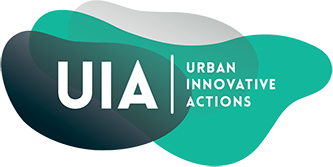Leiedal Intermunicipal Association
Circular economyRE/SOURCED Renewable Energy SOlutions for URban communities based on Circular Economy policies and Dc backbones
“Bloomberg and the International Renewable Energy Agency have calculated that by 2030 2 million old batteries will have been removed from electric vehicles and that 8 million tons of PV panels will have been discarded as waste. The Transfo district wants to demonstrate that things can be done differently.”
Belgian policies are giving small-scale and individual renewable energy installations an important role in the energy transition. However, these installations are not the most energy-efficient nor cost-efficient from a societal point of view. Midscale, shared renewable energy technologies should improve energy efficiency and make the energy transition cheaper.
Sharing is a common strategy in the context of energy communities. Other circular strategies, however, like product life extension through reuse, refurbishment and repurposing, reduction through efficient use or even circular supplies, are still less common in the field of renewable energy production, storage and distribution. This expanding sector also needs circular thinking to cap the increasing demand for raw materials such as steel, copper, cobalt, aluminium and lithium.
- Leiedal Intermunicipal Association and 1 municipality: Zwevegem municipality;
- 1 university: Ghent University;
- 1 regional public authority: Province of West Flanders;
- 2 business support organisations: Flux50, REScoop.eu;
- 1 research organisation: Flemish Institute for Technological Research (VITO).
The aim of RE/SOURCED is to design and demonstrate a circular midscale and self-sufficient energy system in an urban environment. The project is implemented on a vast and multifunctional heritage site called ‘Transfo’, consisting of (social) family housing, offices, a microbrewery, event spaces and leisure and sporting facilities.
The backbone of the system is a DC (direct current) power grid, linking a collective set of distributed renewable resources (PV and wind) and energy storage (second-life batteries, vehicle-to-grid and pumped and flywheel storage in existing structures).
The DC power grid offers efficiencies both in terms of energy savings (less power waste because of fewer conversions from DC to AC) and material use (up to 33% more capacity with the same amount of metals). Sharing of production and storage capacities, deployed at distributed locations, brings significant capacity savings, both in terms of required materials and cost. The recycling opportunities of PV and retrofitting and refurbishment of wind turbines are, front and foremost, criteria in the circular procurement procedures.
A renewable energy co-operative, in which all site users have a share, will manage the infrastructure and co-operation. Sharing energy production and storage facilities enables the community to obtain the same level of self-sufficiency with far fewer materials and also enables local balancing through demand-side management.
Citizens, schools and professionals will be invited to experience the advantages of the DC circular smart grid, raising awareness throughout civil society. A training package for professionals will enable other cities to adopt integrated circular energy systems.
The main expected results of RE/SOURCED are:
- An increased share of renewable energy through community-shared solutions.
- Downscaled and rationalised renewable energy production and storage facilities, providing identical services for its users.
- A reduced need for raw materials and higher adoption of certified circular products in (shared) renewable energy systems.
- Enriched insights on the part of consumers and citizens into the benefits of (shared) renewable energy systems and awareness of available technologies.
- More renewable energy professionals willing to introduce circular economy policies in renewable energy projects.
- June 2021: delivering the blueprint for a circular smart grid through the application of circular design principles. The blueprint includes the system layout and contains aspects of material reuse, recovery and recyclability, energy efficiency, energy resources, governance and shared economy.
- June 2021: delivering the blueprint for an energy co-operative. The blueprint is the basis for the roll-out and is used by participants, stakeholders and future service providers.
- December 2021: signing of the notarial deed that establishes the energy co-operative. The co-operative guarantees continuity after the project’s life cycle.
- December 2022: booting up the circular smart grid lighthouse demonstrator. The circular smart grid is operational. It uses a DC backbone to connect midscale renewable energy production, different energy storage systems and a docking station for new technologies. The system layout and its components comply with the circular design standards. Based on smart meter data, supply and demand are matched. Exchange with the upper grid is minimised.
- December 2022: opening the educational trajectory. The project site welcomes children and citizens. It explains the possibilities of circular and shared renewable energy systems. Key features are a set of points of interest (installations to envision and reveal) and learning packages.
- March 2023: delivering a training package for professionals. The package contains guidelines and recommendations on resource efficiency, energy communities, energy system design and management of complex heritage sites. It will be made available online through webinars.





















